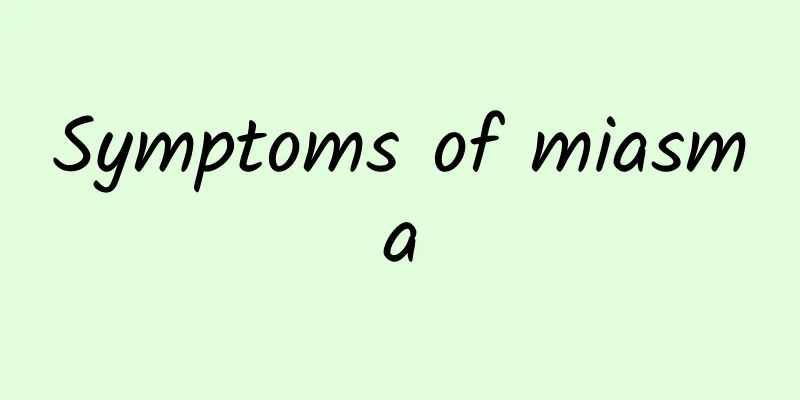What to do if your child has repeated fever

|
Children's immunity is in a stage of continuous improvement, so at this time their bodies have poorer ability to adapt to the outside world, and therefore the chance of getting sick is also higher. What bothers parents the most is the problem of children having repeated fevers, because fever can damage children's brain nerves, causing serious intellectual effects. When children have repeated fever problems, what methods can parents use to treat them? 1. Why do children have repeated fevers? Because children have poor ability to adapt to the external environment and their immune systems are not yet fully developed, any discomfort can easily lead to fever symptoms, or their body temperature may rise again quickly after taking medicine to reduce the fever. Especially in the hot summer, if parents use the air conditioner improperly or the baby drinks less water and cannot adapt to the high temperature weather, it will cause repeated fever. There are many causes of fever: mainly bacterial and viral invasion, which cause respiratory and gastrointestinal infections and lead to fever. What parents can do is to provide adequate nutrition according to the child's age and physical development, and add complementary foods in a timely, reasonable and balanced manner. Parents should be especially reminded that if their child has a fever for more than three consecutive days without improvement or if the baby has a high fever or convulsions, they should seek medical attention in time to identify the cause and provide symptomatic treatment. 2. What to do if your child has repeated fever Generally, if a child's fever is below 38.5℃, parents should adopt physical cooling methods, such as drinking more water, using fever-reducing patches, etc., and do not abuse drugs. When a child's fever is above 38.5℃, it is best to give the child medication under the guidance of a doctor. 1. When the body temperature is below 38.5℃, physical cooling is the preferred intervention. Fever is the most common symptom of infectious diseases in children. The treatment of fever can be roughly divided into "physical treatment" and "drug treatment". Generally speaking, when a child's body temperature is below 38°C, there is no need to use drug treatment, but choose the correct physical cooling method. For example, applying a fever-reducing patch, drinking plenty of water, and taking a warm bath can all help lower body temperature. 2. Infants and young children with a body temperature above 38.5°C need drug treatment. If you find that your child's body temperature has exceeded 38.5℃, parents should closely observe the child's condition so as to respond in time. For infants and young children, when their body temperature exceeds 38.5℃, they need to be given medication. 3. If the body temperature is above 39°C, medication should be taken under the guidance of a doctor. When a child's body temperature exceeds 39°C and is considered a high fever, Western medicine treatment is usually chosen. Currently, ibuprofen and paracetamol are commonly used antipyretics in clinical practice. These two types of drugs are relatively safe. But one thing that must be made clear is that parents should use the medication under the guidance of a doctor, especially pay attention to the dosage, and send the baby to the hospital for treatment in time. Repeated fever in children is a situation worthy of attention. There are many factors that lead to this situation. If the child's fever is not very serious, the first thing to do is physical cooling. If the child's fever is high, exceeding 38.5 degrees, then timely measures must be taken, drug treatment must be given, and a doctor must be seen immediately if necessary. |
<<: The efficacy and eating methods of seahorse
>>: Fetal heart rate 162 boy girl
Recommend
Is it good for pregnant women to eat pig hearts?
Everyone knows that pregnant women are in great n...
What should I do if I have a severe cough late at night?
Colds can occur in any season. Sudden cool or hot...
How painful is a colonoscopy?
Colonoscopy is a somewhat painful procedure becau...
Will small breasts affect sex life?
There are many factors that affect the harmony of...
How many days does it take for an acute sprained waist to heal?
If we have an acute sprain of the waist, we shoul...
Floating wheat insomnia
It is not difficult to find that many people are ...
Effects of wasp venom
Wasp venom is mainly concentrated on the hornet&#...
What is the cause of chest tightness, shortness of breath and rapid heartbeat?
I don’t know if you have ever had this experience...
What to do if your lumbar spine hurts after sitting for a long time
There is always a group of people around us who w...
What to do if your lips are dry in winter
What to do if your lips are dry in winter? There ...
What Western medicine is most effective for pharyngitis?
Pharyngitis is quite common in our daily life. Th...
What will happen if an elderly person has a gastric tube inserted?
Elderly people with gastric tubes inserted may ex...
Which is better for removing dampness and toxins: medicine or food?
If you suddenly feel that your appetite has decre...
How many times a week do you usually do cervical massage?
Massage is a good way to relieve bone pain. When ...
How to treat spontaneous pneumothorax? What are the conservative treatment methods for pneumothorax?
The pleural cavity is a closed potential space th...









